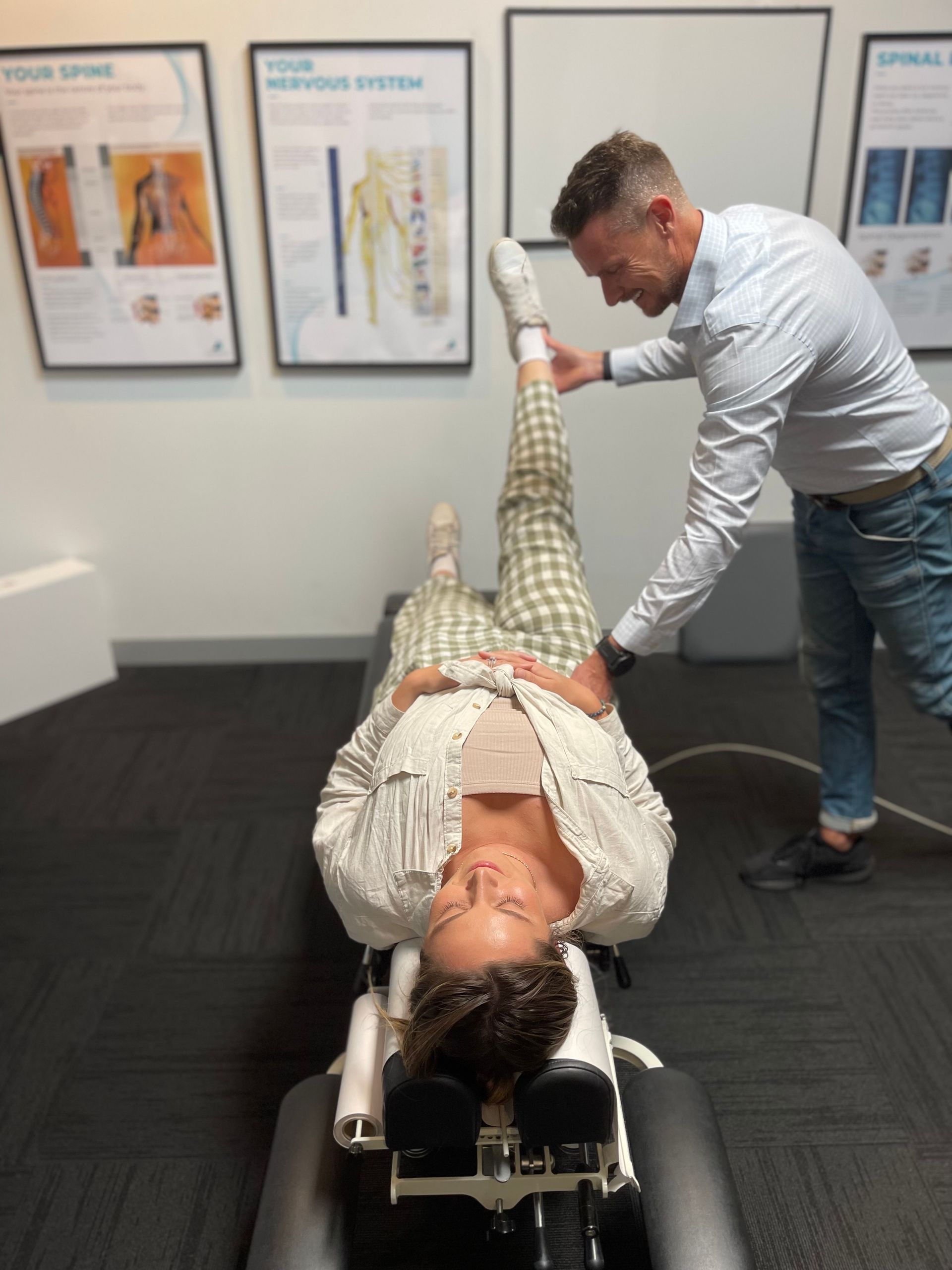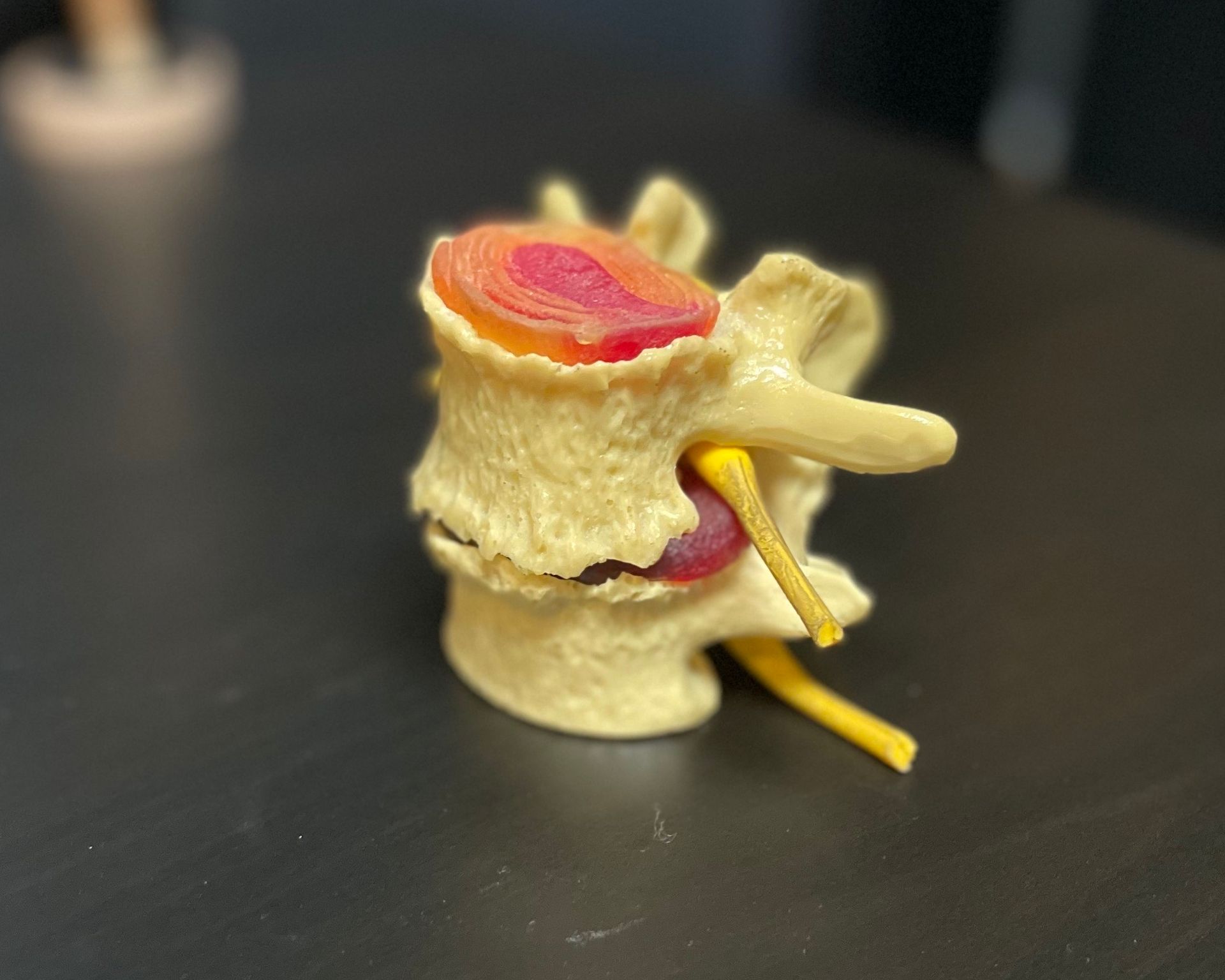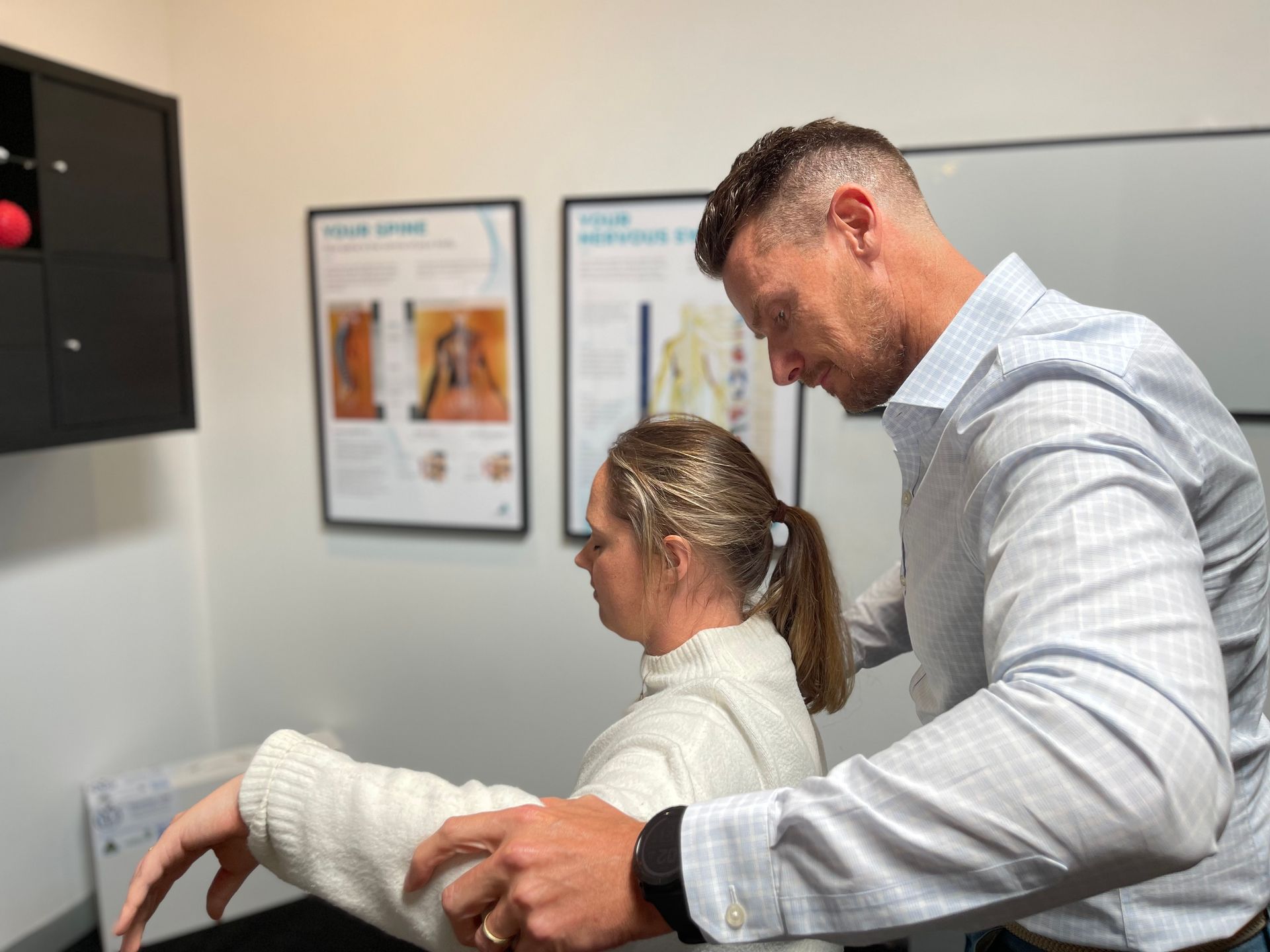What Are The Side Effects Of Chiropractic Treatment
As someone who is always seeking innovative solutions for my health and well-being, I've often wondered about what are the side effects of chiropractic treatment. Chiropractic adjustments have gained popularity as a natural alternative to traditional medical interventions, but what are the risks involved?
In this article, we will delve into the world of chiropractic care and explore the potential adverse reactions, neck pain relief, and overall effectiveness of this holistic approach.
When it comes to chiropractic treatment, it's essential to understand that not all practitioners possess the same level of expertise. The skill and knowledge of your chosen chiropractor play a significant role in determining whether you experience positive outcomes or potential complications. While some may argue that adverse reactions are rare, it's crucial to be aware that they can occur. By exploring both sides of the coin, we can gain a better understanding of the potential risks involved in choosing chiropractic care as part of our wellness routine.
Innovative individuals like myself are constantly seeking new ways to improve our quality of life. Whether you're experiencing chronic neck pain or simply curious about alternative healing methods, understanding the side effects and effectiveness of chiropractic treatment is vital for making informed decisions about your health.
So let's dive deep into this fascinating topic and uncover everything there is to know about the world of chiropractic care!
What Are The Side Effects Of Chiropractic Treatment
Did you know chiropractic treatment can have side effects? Chiropractic care is generally safe and effective, but there are risks.
Treatment-related soreness is common. This usually goes away in a few days. Chiropractic adjustments may cause fatigue because your body needs time to adjust.
Spinal manipulation, a common chiropractic technique, rarely causes serious side effects. Herniated discs, nerve compression, and strokes are examples. However, these serious complications are rare and usually only occur when performed by an inexperienced or unqualified practitioner.
Choosing a licensed, experienced, and trained chiropractor is crucial. They'll know how to make safe and effective adjustments. Your chiropractor can also discuss pre-existing medical conditions to reduce complications.
Chiropractic Adjustments

Think about how a chiropractic adjustment realigns and relieves tension to help you move more comfortably. The mainstay of chiropractic treatment is adjustments to improve joint function and reduce pain. These gentle spinal and joint manipulations correct subluxations, or misalignments. Chiropractic adjustments can relieve symptoms and promote wellness, but there are potential side effects.
- Soreness or discomfort: It's not uncommon to feel soreness or discomfort in the areas that were adjusted during a session. This can happen due to the release of tension in muscles and ligaments surrounding the treated joints.
- Headaches: Some individuals may experience headaches after a chiropractic adjustment. This could be attributed to changes in spinal alignment or muscle tension being released.
- Fatigue: Resting after a chiropractic session is often recommended as fatigue can occur due to the body readjusting itself after treatment.
- Temporary increase in symptoms: In rare cases, some patients may report an initial worsening of their symptoms following an adjustment. This temporary increase in symptoms is known as a healing crisis and typically resolves within a day or two.
Note that these side effects usually go away without treatment within a short time. If you have concerns about side effects or persistent or severe symptoms after chiropractic treatment, consult your doctor.
Chiropractor Expertise
After a chiropractic adjustment, you need a skilled and knowledgeable chiropractor to ensure safety and efficacy. An experienced chiropractor knows how to manipulate the spine to promote healing and relieve pain. They can use their extensive knowledge to identify any underlying issues causing discomfort and treat the root cause rather than just the symptoms.
Chiropractic care requires years of education and training. Their extensive knowledge of anatomy, physiology, and biomechanics allows them to make precise patient-specific adjustments. This expertise ensures treatment efficacy and minimizes side effects.
A good chiropractor has experience with many conditions and injuries. They are skilled at reviewing medical histories, performing thorough exams, and using diagnostic tools. With this comprehensive approach, they can determine if chiropractic treatment is right for a person or if other therapies should be considered. They can provide personalized care that maximizes results and minimizes risks by considering all aspects of a patient's health.
Chiropractic treatment requires an experienced chiropractor. Their skills allow them to adjust safely and effectively with minimal side effects. They can treat root causes rather than symptoms due to their anatomy and physiology knowledge.
Adverse Reactions

Chiropractic adjustments that cause pain or unexpected responses can be concerning. Chiropractic treatment is generally safe, but side effects and adverse reactions should be considered. These can include soreness or stiffness in the treated area, fatigue, headaches, and temporary increased symptoms. Although rare, nerve damage and herniated discs can occur.
Chiropractors use manual manipulation to realign the spine and improve body function. Controllable force is applied to specific joints to restore movement and relieve pain. While most people feel immediate relief after an adjustment, some may experience mild discomfort. This can cause muscle soreness, like after exercise, or a temporary increase in symptoms before they improve.
Chiropractic may cause fatigue in some people. Chiropractic treatments can release muscle tension and activate the body's natural healing response, which can leave people exhausted. The body may also experience headaches as it realigns. These symptoms usually go away in a day or two without treatment.
Patients considering chiropractic treatment must discuss their concerns with their chiropractor. Understanding spinal manipulation side effects helps patients make informed healthcare decisions
Neck Pain Relief
Chiropractic adjustments relieve neck pain without surgery or medication. Neck pain can result from poor posture, muscle strain, or injury. Chiropractors use gentle manipulations and spinal adjustments to realign and function the spine, relieving neck pain and tension.
Instead of treating neck pain with medication, chiropractic treatment addresses the root causes. Chiropractors improve nerve function and natural healing by correcting spine misalignments. This treatment relieves neck pain immediately and prevents future episodes by addressing the cause.
Chiropractic neck pain treatment has few side effects. When done by a professional, chiropractic adjustments are safer than some medications or invasive procedures. However, as their bodies adjust to the treatment, some may experience mild soreness or stiffness after the first few sessions.
Chiropractic treatment may relieve neck pain without surgery or medication. Chiropractors can reduce side effects and provide long-term relief by restoring spine alignment and function.
Understanding how chiropractic care can manage other neck pain symptoms is crucial when transitioning to symptom management.
Symptom Management

Manage your neck pain with effective symptom management. Chiropractic treatment for neck pain and symptoms is natural and non-invasive. Without medication or surgery, patients can improve significantly by working with chiropractors. Here are four effective chiropractic symptom management methods:
- Manual adjustments: Chiropractors use their hands or specialized tools to apply controlled force to the spine, joints, and muscles surrounding the neck area. These adjustments help realign the spine, reduce muscle tension, and improve overall mobility. By restoring proper alignment, patients often experience a decrease in pain intensity and frequency.
- Therapeutic exercises: In addition to manual adjustments, chiropractors may prescribe specific exercises tailored to each patient's needs. These exercises aim to strengthen weak muscles, improve flexibility, and enhance posture. Regularly performing these exercises can help manage symptoms by promoting better spinal health and reducing strain on the neck.
- Posture correction: Poor posture is a common contributor to neck pain and discomfort. Chiropractors can educate patients on proper ergonomics at workstations, sleeping positions, and daily activities that may be aggravating their condition. Making simple adjustments like sitting up straight or using ergonomic equipment can have a profound impact on symptom management.
- Lifestyle modifications: Chiropractors take a holistic approach when it comes to treating patients with neck pain. They consider various lifestyle factors that could be exacerbating symptoms such as stress levels, diet choices, sleep patterns, and physical activity levels. By addressing these underlying factors through lifestyle modifications like stress reduction techniques or nutritional guidance, patients can further enhance their symptom management outcomes.
These symptom management techniques can help you live without neck pain by incorporating them into your chiropractic treatment plan.
Treatment Options
Let us know more about what are the side effects of chiropractic treatment through treatment options. Multiple treatments are available for symptom management. Chiropractic is a popular treatment. This alternative medicine treats mechanical musculoskeletal disorders, especially spine disorders. Chiropractic treatment has side effects like any other medical intervention.
It's important to understand chiropractic treatment before discussing its side effects. For alignment and healing, chiropractors use their hands or special instruments to apply controlled force to specific body parts. Chiropractors may use spinal adjustments, joint manipulations, stretching, and other methods to align and heal the body.
Many patients find chiropractic treatment effective in relieving pain and improving mobility, but it does have side effects. Most patients report mild soreness or discomfort after treatment. This usually goes away in a day or two, but rest and ice packs may help.
Chiropractic treatments have caused herniated discs and nerve damage in rare cases. These instances are rare and usually caused by improper technique or inexperienced practitioners. Patients must carefully research and choose a licensed chiropractor.
Patient Experiences

Imagine hearing patients from all backgrounds describe how chiropractic treatment has changed their lives for pain relief and mobility. These amazing patient experiences demonstrate chiropractic's benefits:
One patient with chronic neck pain for years found great relief after chiropractic adjustments. Their neck pain subsided, and their range of motion increased. This improvement made daily tasks easier and improved their quality of life. Another person suffered from chronic headaches. After failing with medications and therapies, they tried chiropractic. Their headaches gradually decreased in frequency and intensity until they disappeared with gentle adjustments. They resumed daily activities without head pain.
Chiropractic care helped a sports injury patient heal faster. Spinal adjustments, stretching, and soft tissue manipulations reduced inflammation and accelerated recovery. They recovered faster than expected and continued their athletic pursuits.
Accidentally suffering severe back pain is an inspiring story. They were frustrated and discouraged by traditional medicine's limited relief. They found relief from pain and overall well-being after trying chiropractic treatments. Chiropractic care reduces physical pain and increases mental strength.
These patient stories show how chiropractic treatment can relieve pain and improve mobility for people with various conditions or injuries. Patients have reported significant improvements in their daily lives after non-invasive spinal adjustments or soft tissue manipulation.
To fully understand chiropractic treatment's benefits and risks, we must consider these patient experiences as we discuss safety concerns.
Safety Concerns
It is important to address chiropractic safety concerns, despite positive patient experiences. Chiropractic treatment is generally safe and effective, but it can cause side effects like any medical intervention. Chiropractic manipulation patients should know these risks before undergoing treatment.
Injury risk is a major concern with chiropractic treatment. Rarely, spinal manipulations can damage blood vessels or nerves. Strokes and other serious issues can result. Patients should tell their chiropractor about all their medical history and pre-existing conditions to reduce the risk of such injuries.
Soreness or discomfort after chiropractic care is another possibility. This usually goes away in a day or two. As their spine realigns, some patients may experience headaches or fatigue. Patients considering chiropractic treatment should consider these mild, short-term side effects.
Chiropractic manipulation may also cause side effects in people with osteoporosis, inflammatory arthritis, or spinal cord compression. These high-risk patients should consult their primary care provider before seeking chiropractic care.
Chiropractic treatment's safety concerns are important, but serious complications are rare. Most patients find pain relief and positive results with this therapy. It's best to consult with a qualified healthcare professional who can assess your case and make recommendations based on your needs and medical history.
Potential Risks

To fully understand the effects of chiropractic care on patient well-being, it is important to address its risks.
Chiropractic treatment is generally safe, but patients should be aware of side effects. Soreness or discomfort after spinal adjustments is a common side effect. This pain is usually mild and temporary, but it can sometimes cause nerve damage or a stroke.
In rare cases, chiropractic' spinal adjustments can cause herniated discs or compressed nerves. These complications may cause severe pain and require medical attention. Patients should report any new or worsening symptoms during or after chiropractic treatment so their doctor can assess the situation and provide appropriate care.
Another chiropractic risk is that spinal adjustments can worsen pre-existing medical conditions. Osteoporosis and inflammatory arthritis may increase the risk of spinal adjustment side effects. To ensure patient safety, chiropractors should take a complete medical history before treating.
Patients should be aware of rare chiropractic treatment risks. Spinal adjustments can cause soreness, herniated discs, compressed nerves, and increased risk for people with certain medical conditions. Before receiving chiropractic care, patients should discuss their medical history and concerns with their doctor. Patients can make informed health decisions by knowing these risks.
Neck Pain Causes
Poor posture often causes neck pain. Long hours hunched over a desk or couch strain neck muscles and ligaments. Muscle imbalances and neck tension can cause pain. Neck pain can also result from looking down at our phones or sleeping awkwardly.
Neck pain often results from muscle strains or injuries. Activities that require repetitive or sudden motions can strain neck muscles and soft tissues. Carrying heavy bags on one shoulder or playing contact sports without protection can also strain muscles and cause pain.
Medical conditions can also cause neck pain. Chronic neck pain can result from arthritis, herniated discs, or spinal stenosis. These conditions may result from spine degeneration or wear-and-tear. If you suspect a medical issue is causing your neck pain, consult a doctor.
To treat neck pain effectively, chiropractors must address these causes, improve posture, and prevent injuries. Chiropractors treat immediate symptoms and advice on lifestyle changes to prevent neck pain.
Effectiveness Of Chiropractic

Chiropractic care uses natural, non-invasive methods to relieve neck pain and improve your health. A holistic approach to spine and nervous system alignment, chiropractic can reduce pain and promote healing. Regular adjustments and other chiropractic techniques have helped many chronic neck pain patients.
Chiropractic treatment effectively treats neck pain's root causes. Chiropractic corrects spinal misalignments that cause nerve irritation and muscle tension, unlike medications or surgery. Chiropractors relieve neck pain and improve mobility by realigning the spine.
Chiropractic's whole-body wellness focus is another factor in its efficacy. Pain in one area often indicates body imbalances or dysfunctions, according to chiropractors. Spinal adjustments, soft tissue therapy, and other specialized techniques aim to improve health. However, it is important to address the side effects associated with chiropractic treatment for neck pain. Procedures and circumstances carry risks, like any medical treatment. Chiropractic care has fewer side effects than surgery or long-term medication.
Chiropractic care can relieve chronic neck pain without medication or surgery. It reduces pain and improves quality of life by aligning the spine and promoting wellness.
Patient Satisfaction
Many neck pain patients are satisfied with chiropractic care and its ability to improve their health. Chiropractic adjustments can relieve neck pain and restore mobility. Holistic chiropractic care aligns the spine, which treats the problem and benefits the whole body. Patient satisfaction is high due to this comprehensive approach.
Patient satisfaction with chiropractic treatment depends on several factors. First, chiropractors tailor treatments to each patient. They thoroughly diagnose the issue and create customized treatment plans. Individualized care makes patients feel heard and understood, improving care satisfaction.
Additionally, chiropractors use multiple techniques during treatment. Spinal adjustments, soft tissue therapy, and posture and flexibility exercises are examples. Chiropractors use a multidimensional approach to treat back and neck pain, both immediately and long-term. Patients like this comprehensive method because it provides long-term relief.
Patient education, along with personalized care and a variety of treatments, boosts chiropractic patient satisfaction. Chiropractic patients learn about their condition, how spinal misalignments affect health, and self-care strategies they can use at home. This empowers patients to actively participate in their healing and builds trust in chiropractic treatments.
Neck pain patients who receive chiropractic care are generally satisfied. Chiropractic care relieves pain and discomfort through targeted manipulations or holistic approaches like soft tissue therapy and exercise. Chiropractors foster patient satisfaction and empower them to manage their health by prioritizing personalized care, offering diverse treatment options, and educating them.
Final Thoughts
In conclusion, chiropractic treatment has pros and cons. A skilled chiropractor can relieve neck pain and improve well-being with chiropractic adjustments. It's important to know the risks and side effects of this treatment.
Chiropractic care helps many neck pain sufferers, but not everyone. Patients should discuss chiropractic treatments with a doctor first. Patients should also closely monitor their symptoms after each session and report any severe reactions to their chiropractor.
Patient satisfaction with chiropractic treatment varies greatly by experience. Some may see significant neck pain and health improvements, while others may not. Patients should approach chiropractic treatment with openness and realistic expectations. By doing so and consulting a trusted healthcare provider, people can decide if this therapy is right for them. So now you know what are the side effects of chiropractic treatment.
Frequently Asked Questions
Is Chiropractic Treatment Safe For Pregnant Women?
Before receiving any treatment during pregnancy, pregnant women should consult a doctor. Chiropractic treatment is generally safe. Prenatal chiropractors can gently and safely relieve back pain, improve posture, and boost well-being.
As with any medical procedure, chiropractic treatment during pregnancy may have risks and side effects. Mild discomfort or soreness after the adjustment, temporary hormone changes, or relaxation-induced contractions are possible.
Open communication with your chiropractor and obstetrician ensures personalized care and reduces the risks of chiropractic treatment while pregnant.
Can Chiropractic Adjustments Worsen My Condition?
Chiropractic adjustments may worsen your condition. Chiropractic treatment can help many people, but it has risks. Incorrect or forceful adjustments can worsen injuries or conditions.
If the chiropractor presses too hard on a herniated disc, it could worsen. Adjustments can cause soreness, but it should go away in a few days. Therefore, it's important to consult with a qualified chiropractor who understands your needs and can tailor the treatment to minimize risks and complications. Chiropractors must stay current on chiropractic care innovations to improve techniques and reduce side effects.
Are There Any Risks Associated With Chiropractic Treatment For Children?
There are risks to chiropractic treatment for children. Before giving your child this treatment, consider these risks.
Chiropractic adjustments can help with musculoskeletal issues and headaches, but they can also cause side effects. After an adjustment, you may experience soreness, headaches, fatigue, or, in rare cases, fractures or nerve damage.
An experienced pediatric chiropractor who understands children's needs and limitations is essential. Before giving your child chiropractic care, weigh the risks and benefits.
How Long Does It Take To Experience Relief From Neck Pain After Chiropractic Treatment?
Chiropractic treatment for neck pain often relieves it quickly. The duration depends on the severity of the condition and the patient's response to treatment.
Patients may experience neck pain relief after their first session. Others may need several sessions to feel better. Remember that chiropractic treatment treats the cause of neck pain, not just the symptoms. Thus, patients often improve over time as they receive treatment.
Chiropractic care is drug-free and non-invasive, providing neck pain relief with few side effects or risks.
Can Chiropractic Treatment Help With Conditions Other Than Neck Pain?
Chiropractic treatment works for neck pain and other conditions. Chiropractors treat spinal misalignments to relieve back pain, joint mobility, and muscle tension.
Chiropractic care also helps with headaches, sciatica, and digestion. The best part is that chiropractic treatment allows natural healing without medication or surgery. If you're looking for innovative health solutions beyond neck pain relief, chiropractic treatment may be worth considering.
Latest Articles
Mornington Peninsula
Chiropractic
Just up the road from you...
- Mon - Fri
- -
- Sat - Sun
- Appointment Only
Mornington
03 9787 8518
Rosebud
03 5911 8181
CONDITIONS
LINKS
Our Locations
Designed By Jon Web Design



